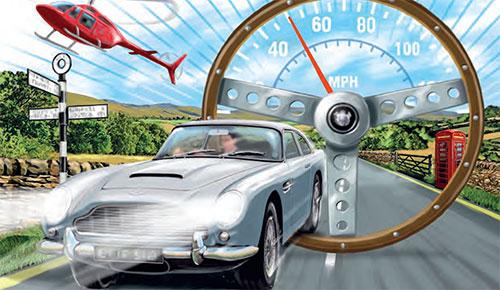Keep fit behind the wheel with the CSP's exercise advice for professional drivers.

Professional and commercial drivers can experience a range of musculoskeletal problems, including back, neck, shoulder and leg pain.
This is a step-by-step guide to correct car set-up, plus some simple stretches for when you take a break from the wheel.
Posture pursuit
A good driving position reduces unnecessary discomfort and back problems
On your marks
Put your car seat into the factory setting position before adjusting it to fit you.
- Set steering wheel fully up and forward
- Set your seat height at its lowest
- Cushion tilted so front edge is at lowest position
- Back rest to be approximately 30o reclined from vertical
- Lumbar adjustment backed off
- Seat positioned fully rearwards.
The starting grid
Ensure maximum vision of the road and good pedal control.
Get ready!
The next steps need only be done once if you’re the sole driver. But if you share a vehicle, where your set-up position could be changed, follow these tips each time you get behind the wheel.
- Raise the seat as high as is comfortable to ensure maximum vision of the road
- Check you have adequate clearance from the roof
- Move the seat forwards until you can fully depress the clutch and accelerator pedals
- Adjust the seat height as necessary for good pedal control
- Adjust cushion tilt angle so that the thighs are supported along the length of the cushion
- Avoid pressure behind the knee.
Just a minute
Don't forget to:
- Adjust the angle of the back rest so it provides continuous support alongthe length of the back to shoulder height
- Avoid reclining the seat too far as this will cause excessive forward bending of the head and neck, and you may feel yourself sliding forwards on the cushion
- Adjust steering wheel rearwards and downwards for easy reach
- Check for clearance for thighs/knees when using pedals
- Ensure display panel is in full view and not obstructed
- Adjust lumbar support for even pressure along the length of the back rest
- Make sure lumbar support ‘fits’ your back, is comfortable with no pressure points or gaps
- Adjust head restraint to reduce the risk of injury in the event of an accident.
Now you're ready to turn the key!
Printed packs of 50 units are available to buy plus postage.
To order, state the quantity of packs you require and click on the ADD TO CART button on the right of this page.
Alternatively, download the A4 easy-print ‘Driving Clear of Pain’ leaflet to follow this expert advice.



































